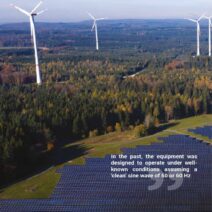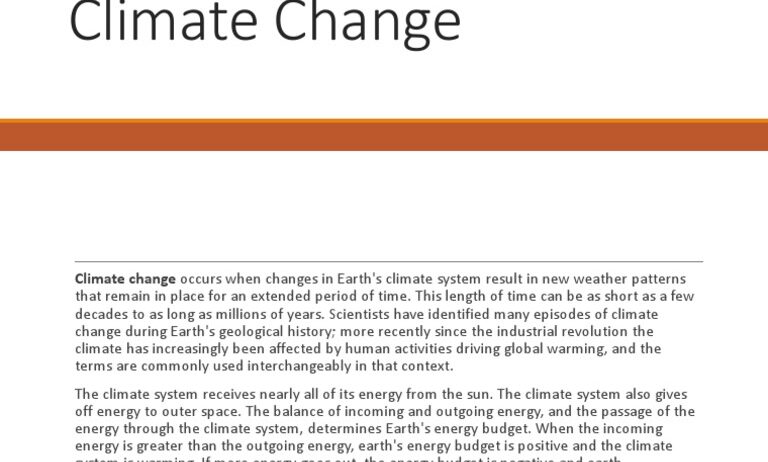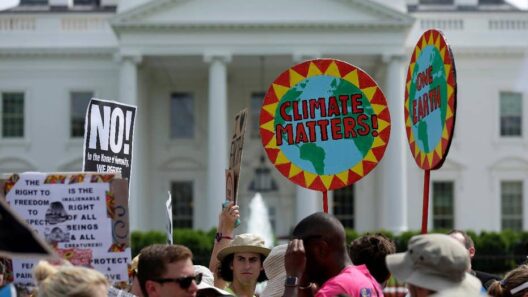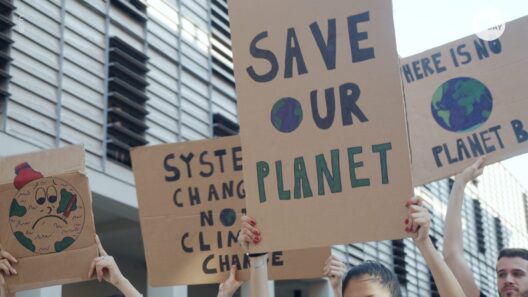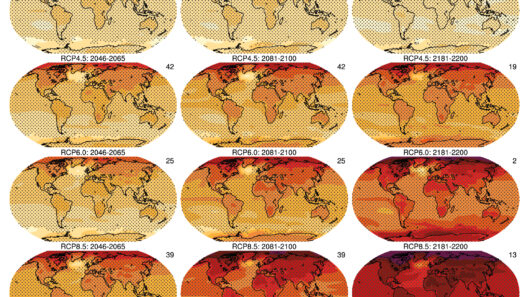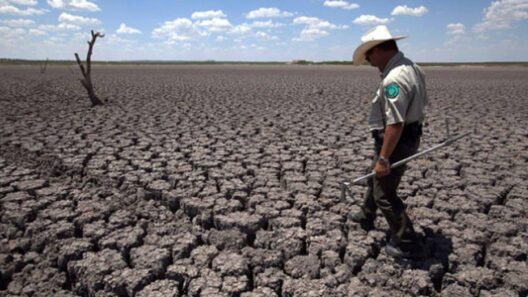Climate change is akin to an invisible specter haunting our planet, its presence felt in every corner of our ecosystems. This phenomenon is not merely a distant concern; it is a palpitating reality that intertwines the destinies of all living organisms. Understanding the myriad factors that contribute to climate change is essential to unmasking the complexities of our times. Let us delve into this intricate tapestry of causation, illuminating key threads woven into the fabric of our changing climate.
At the behest of human activity, greenhouse gases are released into the atmosphere with abandon. The most prominent of these, carbon dioxide (CO2), methane (CH4), and nitrous oxide (N2O), act like a thermal blanket, trapping heat and preventing its escape into the cosmos. This phenomenon, known as the greenhouse effect, transforms our planet into a veritable sauna. Fossil fuel combustion for electricity, transportation, and industry stands as a primary culprit, while deforestation exacerbates this grievous situation by diminishing the Earth’s arboreal guardians that would otherwise absorb CO2.
Deforestation indeed serves as a potent axis around which the climate crisis pivots. Each tree felled not only releases stored carbon but also diminishes our planetary lungs, reducing the capacity of these natural entities to cleanse our atmosphere. As forests disappear, so too does biodiversity, leading to ecosystems that are less resilient to climate fluctuations. The metaphorical roots of life that interweave within these ecosystems are severed, exposing fragile interconnections that have evolved over millennia.
Industrialization, a defining hallmark of the modern era, has catalyzed significant climatic alterations. Manufacturing processes emit copious amounts of greenhouse gases, with industries such as cement production, steel-making, and chemical synthesis leading the charge. Furthermore, livestock farming—a microcosm of inefficiency—produces methane during digestion, showcasing a paradox of protein production that contributes to a greater climate crisis. The agricultural sector, in its push to feed an ever-growing global population, unwittingly intensifies the very problems it seeks to ameliorate.
While human activities undeniably initiate and amplify climate change, natural phenomena also play a notable role. Volcanic eruptions, for instance, release vast quantities of ash and gases into the atmosphere. These eruptions can have both short-term cooling impacts due to the reflection of sunlight, and longer-term heating effects from greenhouse gas emissions. Similar to a wild card in a game of chance, these natural events remind us that while we are the architects of this crisis, nature holds its own set of unpredictable powers.
Furthermore, the oscillating cycles of the Earth, known as Milankovitch cycles, introduce another layer of complexity. The Earth’s axial tilt, eccentricity, and precession shift imperceptibly over thousands of years, influencing climate variations. Though these cycles operate on a geological timescale, they underscore climate change’s multi-faceted nature—one that intertwines human intervention with the profound rhythms of the Earth.
The urgency of the situation is amplified by the deleterious feedback loops that accompany climate change. For example, as glaciers and polar ice melt due to rising temperatures, they expose dark ocean waters or land, which absorb more sunlight instead of reflecting it. This, in turn, accelerates further warming and ice melt—an ominous cycle reminiscent of a perpetual motion machine, spiraling toward greater climatic upheaval.
The rising temperatures of our planet cascade into a slew of secondary effects, creating a mosaic of climatic alterations. Ocean acidification, a direct consequence of increased CO2 absorption by seawater, jeopardizes marine life, particularly calcifying organisms like corals and shellfish. This distress signals a broader ecological imbalance, as these organisms form the bedrock of marine food webs, illustrating the interconnectedness of climate change across different habitats.
The socio-economic ramifications of climate change further illustrate its pervasive nature. Vulnerable populations, primarily in developing regions, bear the brunt of extreme weather events, crop failures, and rising sea levels. The metaphoric floodgates of inequality are breached as resources dwindle, leading to potential conflicts over dwindling supplies, displacement of communities, and a surge in climate refugees. It is, tragically, the least fortunate among us who are most acutely affected by the consequences of a crisis they contributed to the least.
As the narrative of climate change unfolds, it becomes clear that the factors contributing to this crisis are as varied as they are interlinked. From the anthropogenic emissions of greenhouse gases and deforestation to the capriciousness of natural phenomena and the geophysical rhythms of our planet, every dimension shapes the overarching story. Like participants in a grand symphony, all elements must harmonize to create a healthier atmosphere.
Ultimately, the quest for solutions requires a fundamental shift in our collective consciousness. Our world is not merely a backdrop for human activity; it is a living, breathing entity deserving of stewardship. We must recognize that our actions hold profound implications for the biosphere as a whole. It is time to embrace sustainability, innovate in renewable energy sources, and cultivate resilience in our communities. Only through collaborative efforts can we hope to mitigate the cascading effects of climate change, nurturing a planet that sustains both nature and humanity.
The clock is ticking, and the specter of climate change looms larger than ever. To confront it, we must act decisively and understand the factors shaping our future. Through vigilance and informed action, solutions can arise from the very chaos we have created, illuminating a path to a more harmonious existence with the Earth.


